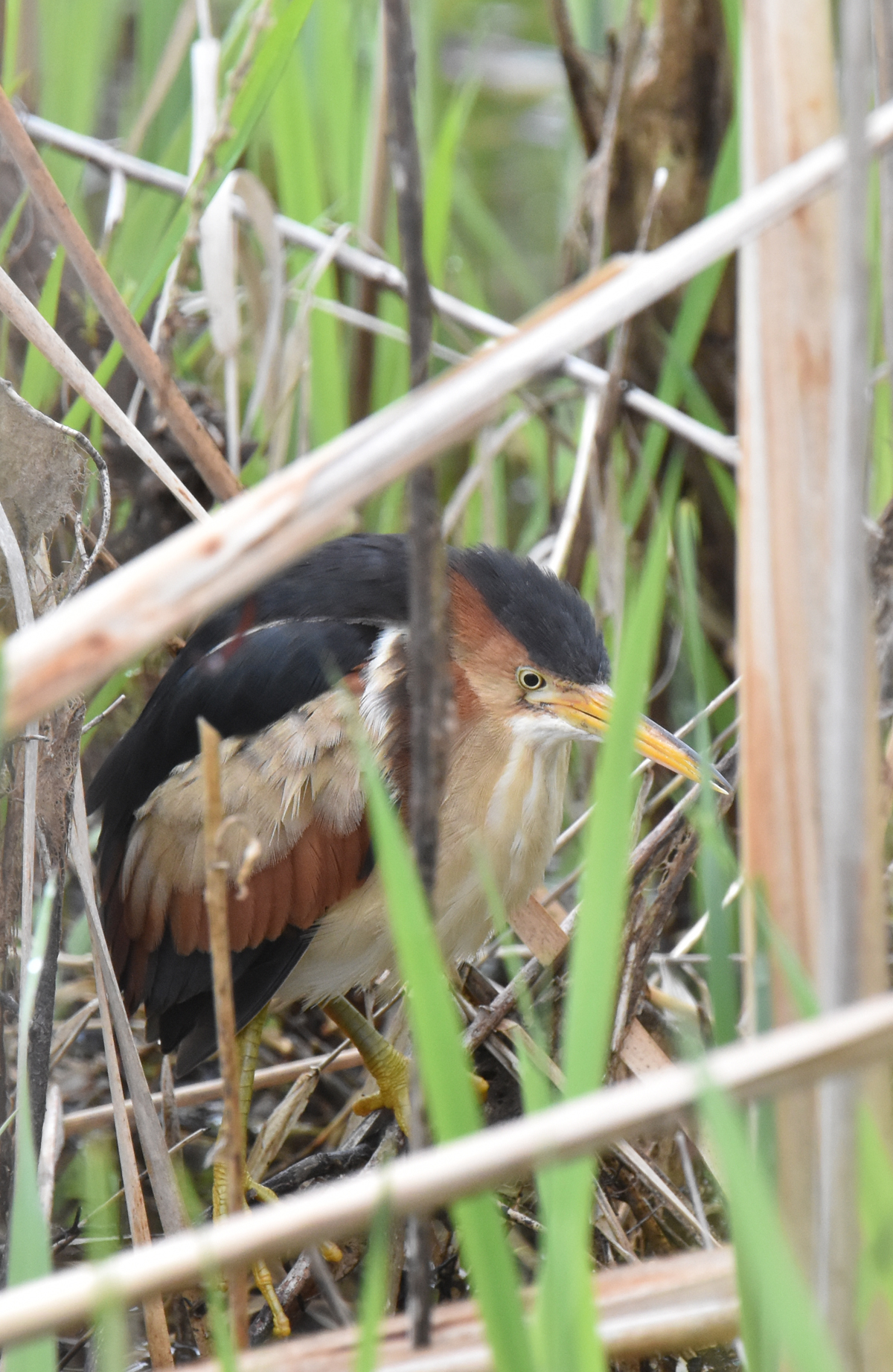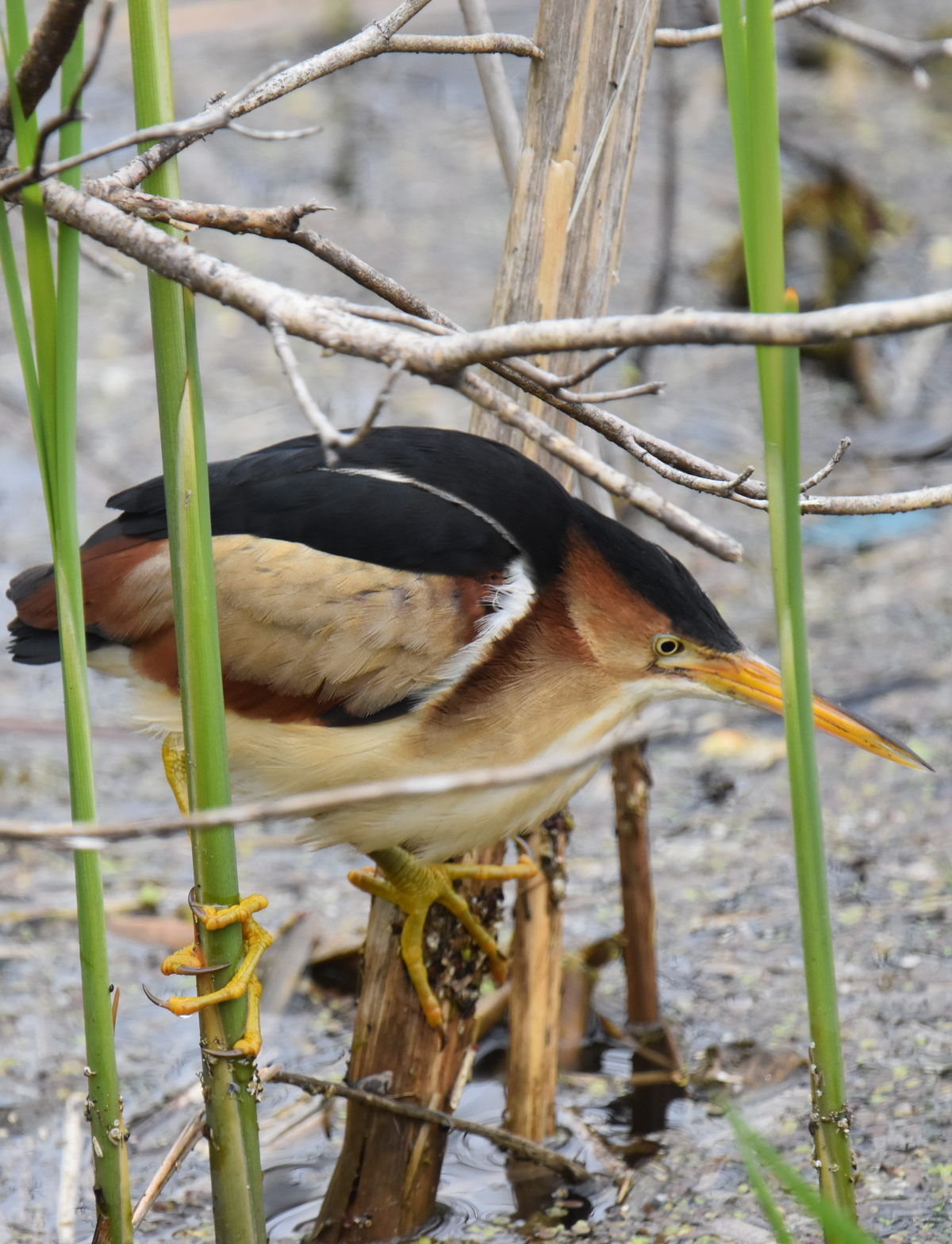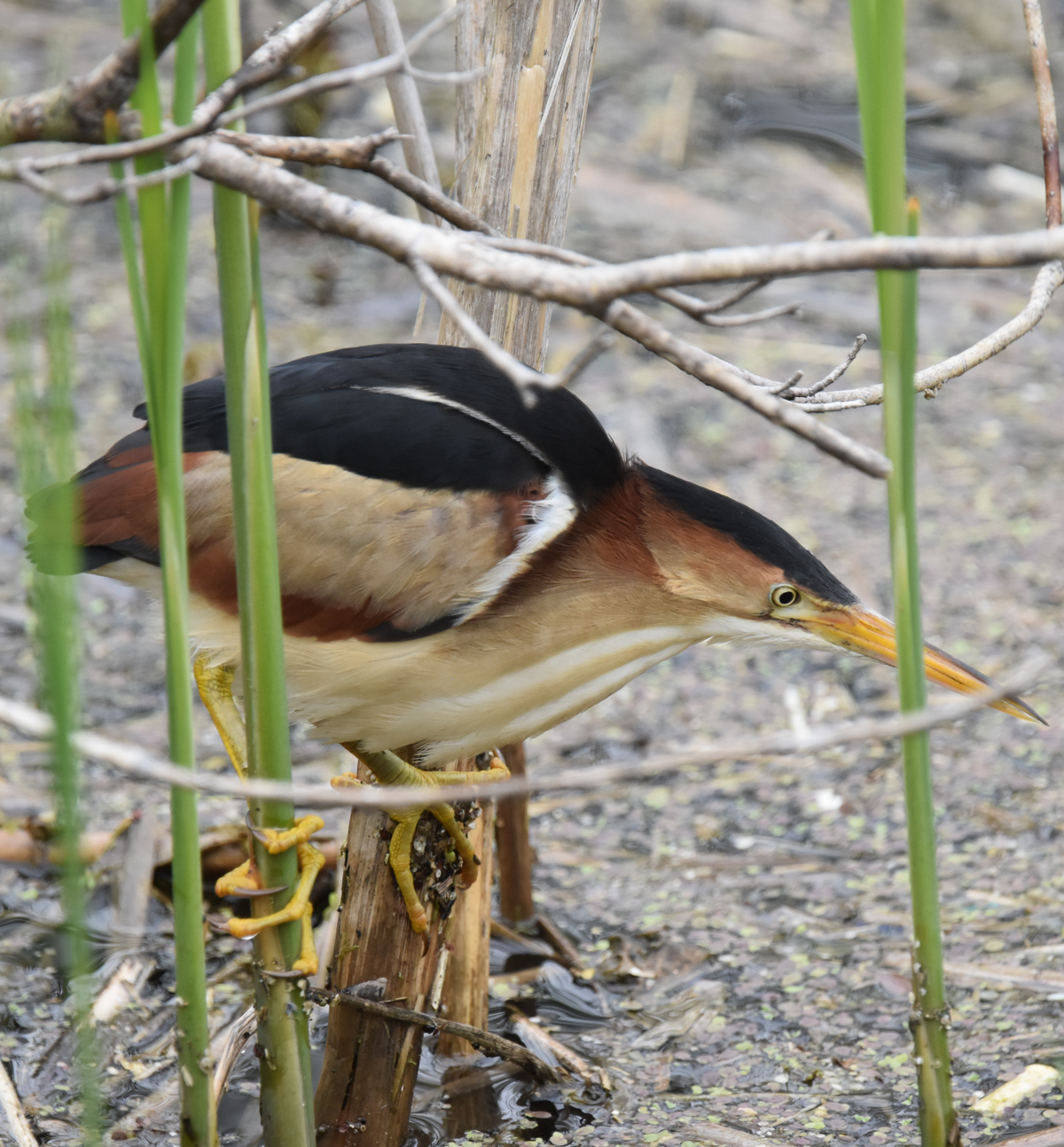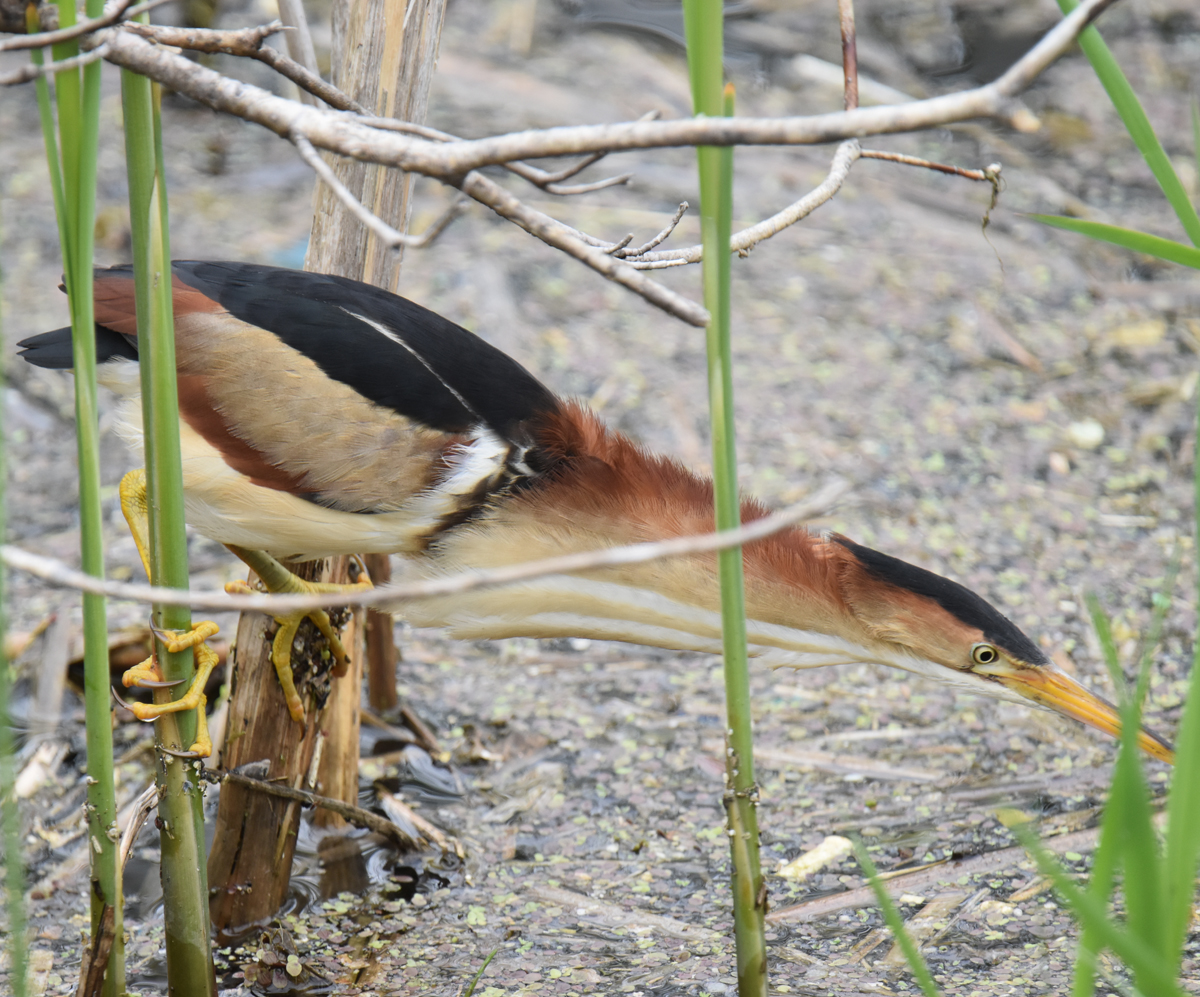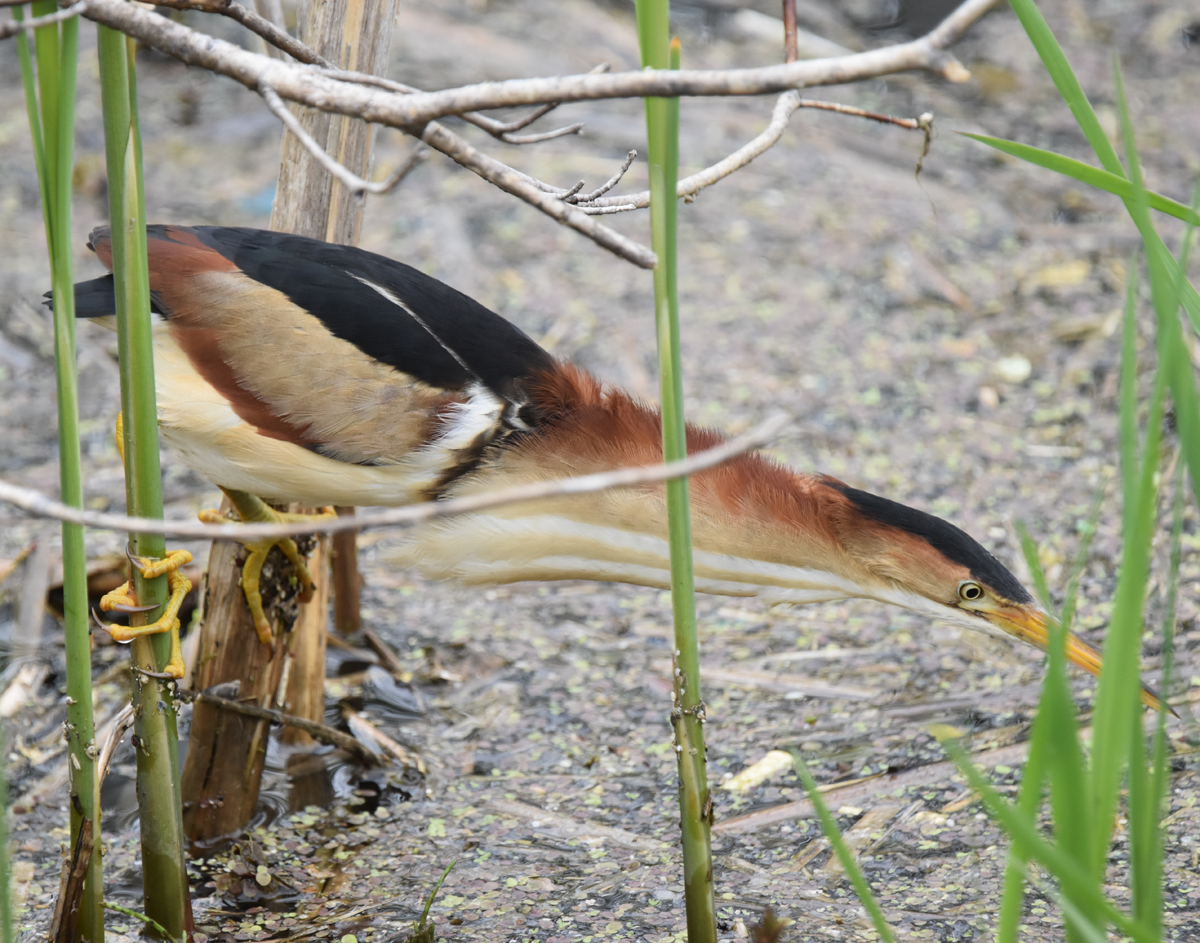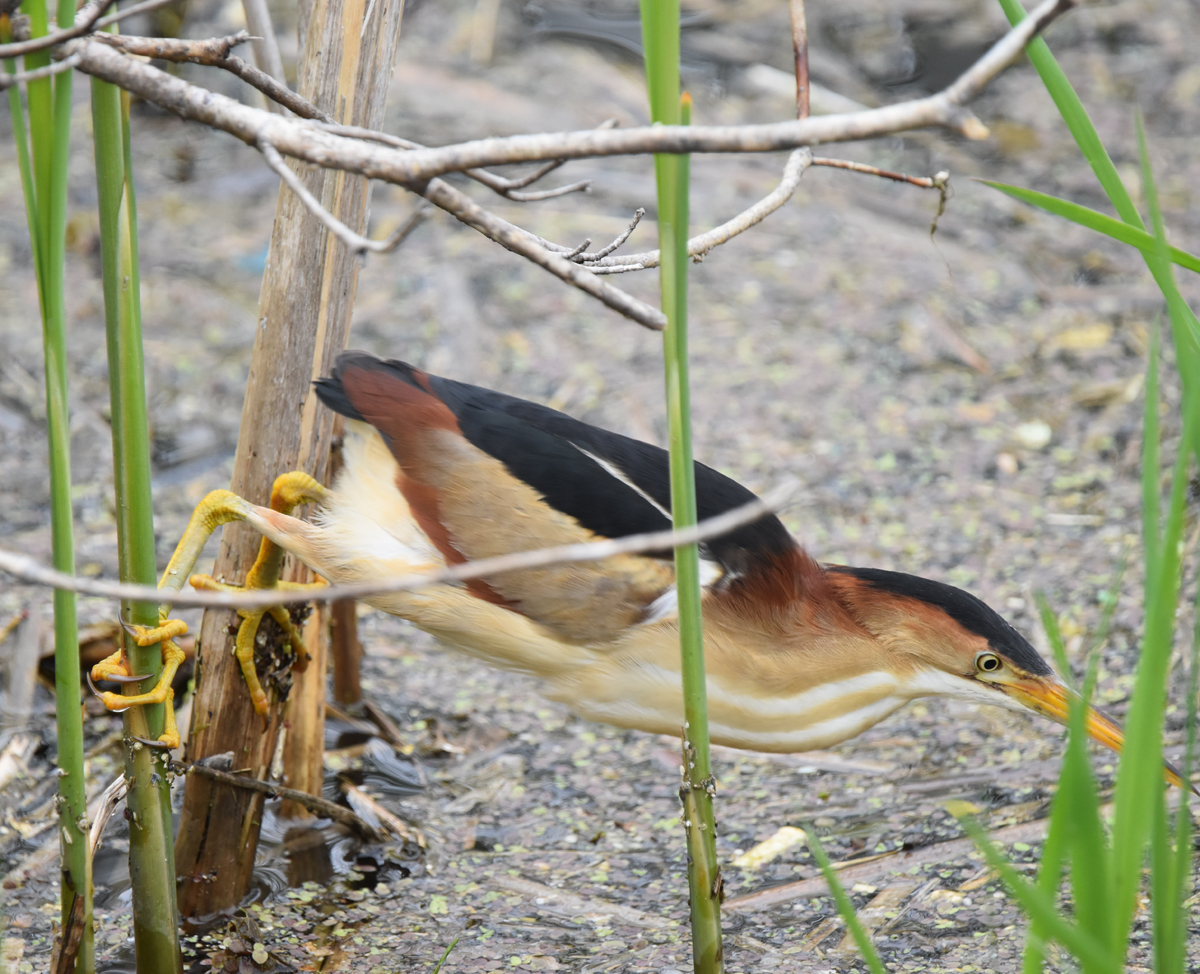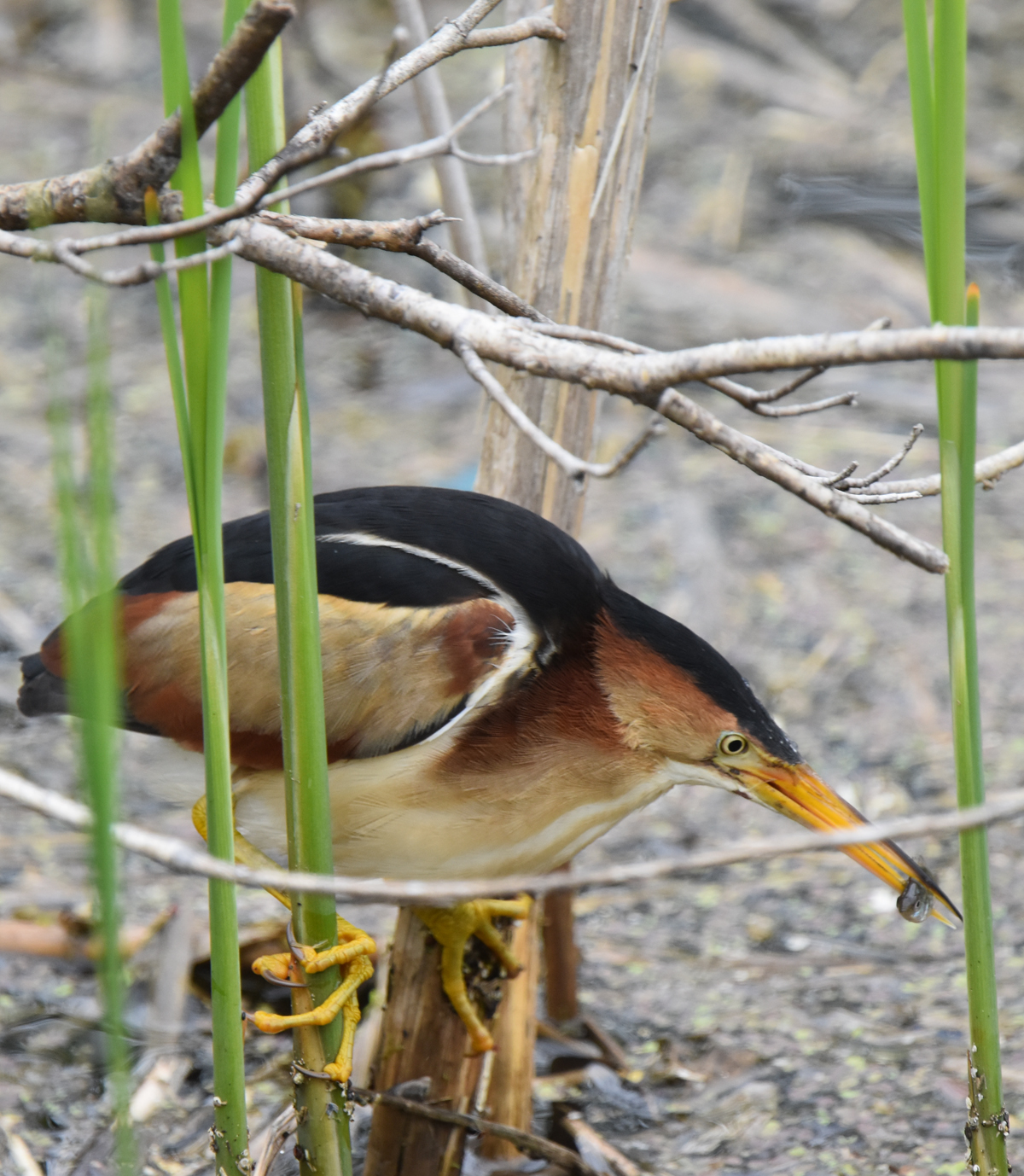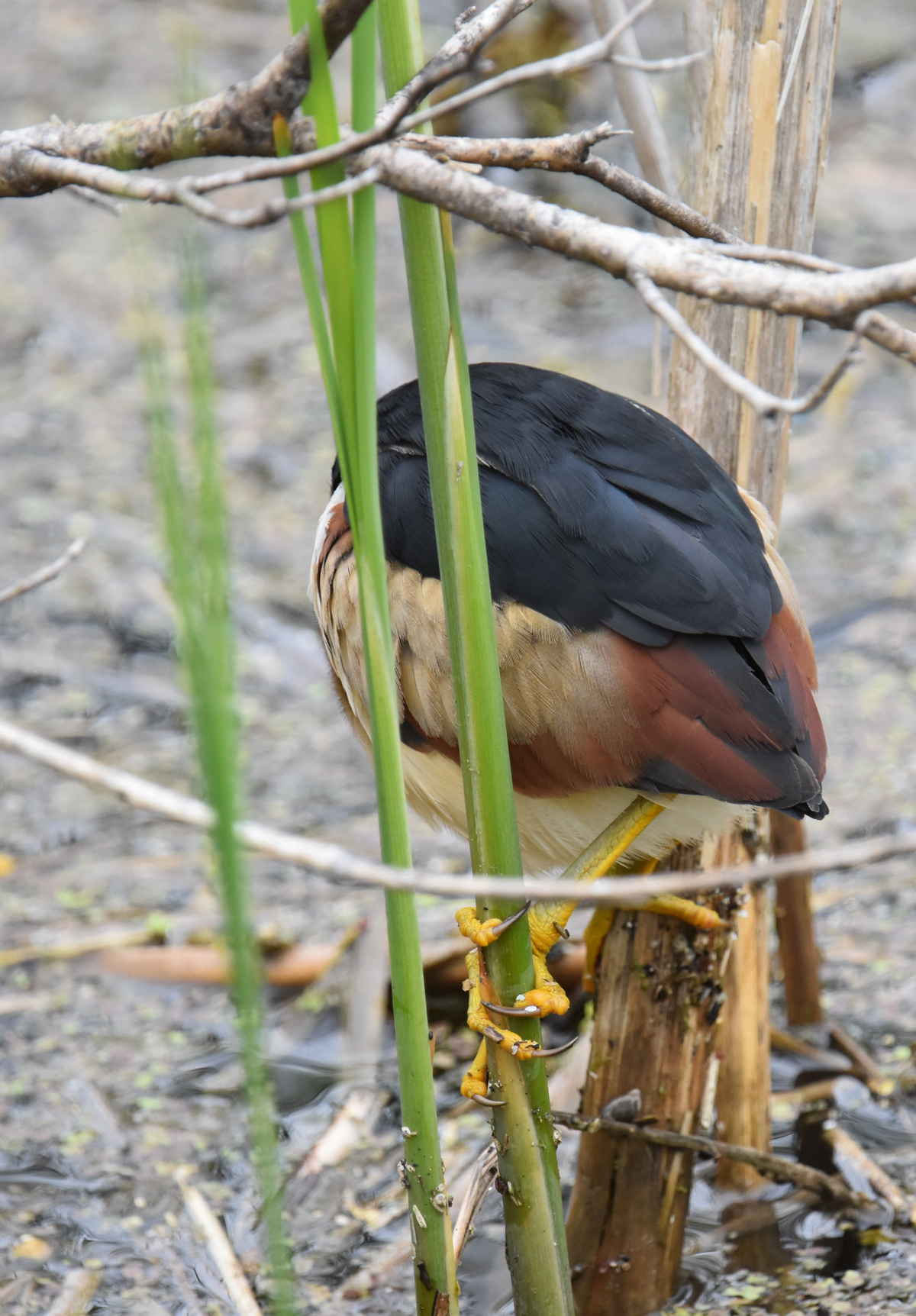A couple of years ago, I had the pleasure of making the acquaintance of a juvenile Least Bittern at Colonel Samuel Smith Park in Toronto. The small long-billed bird was hunting along the canals around the shore of the marina before it migrated south for the winter. This spring, reports flooded in of an adult male Least Bittern at the park and after a few days I went in search of it.
How Big Is a Least Bittern?
There’s a reason for the adjective “Least” and it isn’t a joke like “Little” John in the Robin Hood saga. These are very small birds. According to the Cornell University website, in size they are between a Robin and a Crow: (I found they seemed about half the size of a Mallard.) Their length is at most 14.2 inches (36 cm) and even their wingspan is only a max of 18.1 inches (46 cm). They weigh between the same as one and two regular chocolate bars!
How Likely Is It One Can Find a Tiny Least Bittern in a Big Marsh?
Cornell also says ““The Least Bittern is one of the most difficult North American marsh birds to spot.” That was not encouraging to read!
Their small size and secretive nature (e.g. they like to hunt between reeds, grasses and rushes which makes them seem “secretive” to us because we don’t like to try to walk through them !) made me reluctant to try to see this bird.
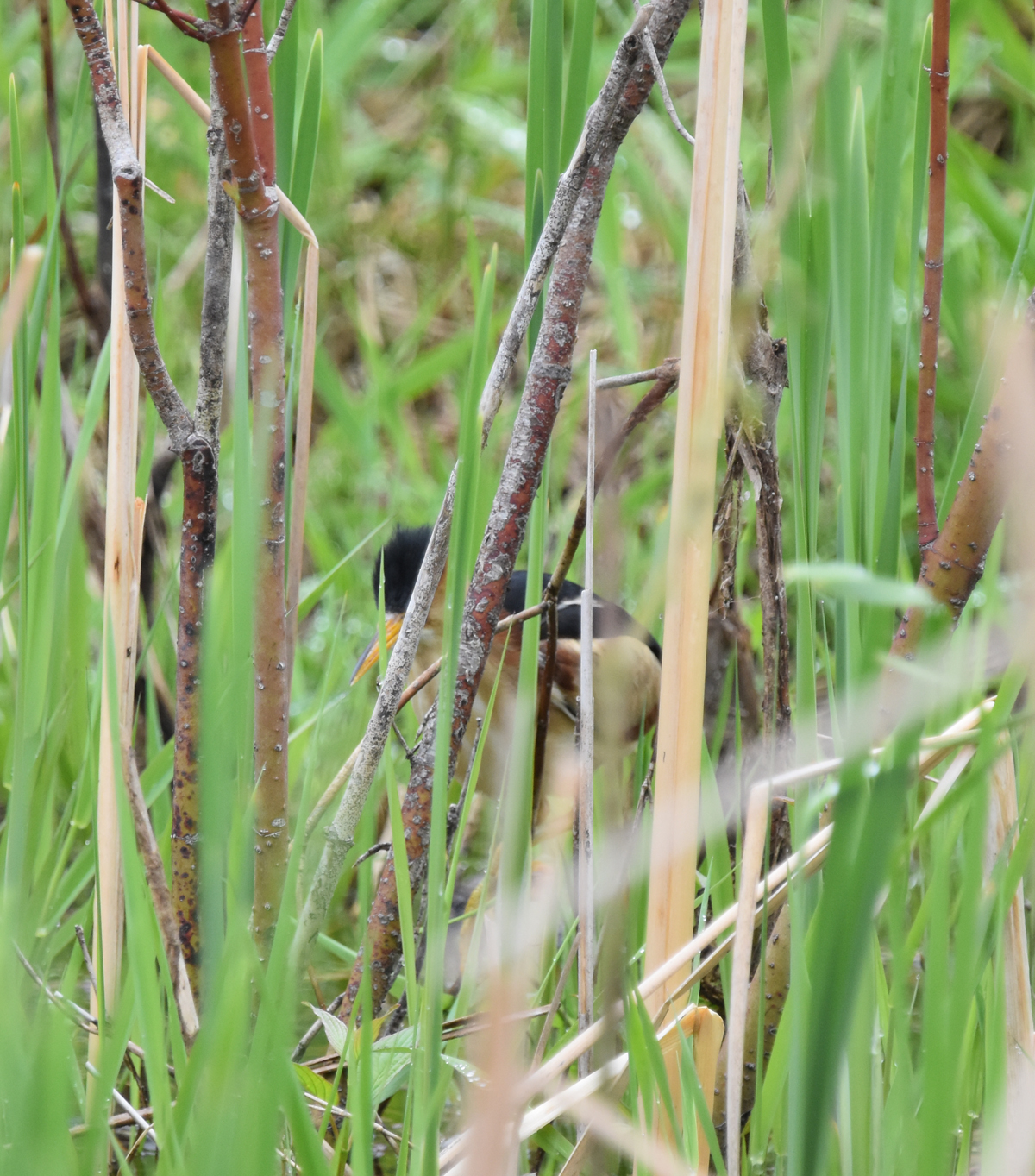
It’s really obvious….isn’t it?
I figured I’d get to the park where there are hundreds of metres of rush-filled shoreline, and never see a feather. The reports, though, suggested this bird was often hunting around the inlet to the duck pond, where the vegetation is much thinner and the angles for getting a look at the shore line are much better. So I thought I’d try my luck.
Many Thanks to Photographer Meghan for Her Bittern Detection !
Even knowing the bird was likely in the relatively small area of shoreline around the inlet end of the Duck Pond I wasn’t confident I’d be able to find it. Others had reported finding it by listening for its call, but birds are notoriously silent when I’m looking for them. (And I refuse to try to lure in birds by playing recordings.) I figured my best bet was to go to Col Sam and look for the photographers.
I met one, and only one, who was walking away saying “Oh, yes, it was here in the open a minute ago. It flew that-a-way.” Well, it was promising to hear the bird was alive and well and recently seen, but that-a-way encompassed a large area of dense reeds and grasses.
I walked down towards the Observation deck and found another photographer. Meghan kindly pointed out the bird to me where it was standing amongst the vegetation. It continued to stand there, not moving, for about 5 minutes.
A class of 20 or more young students, maybe in Grade 1, charged out onto the deck, checking out the views and the Mallards. It didn’t move.
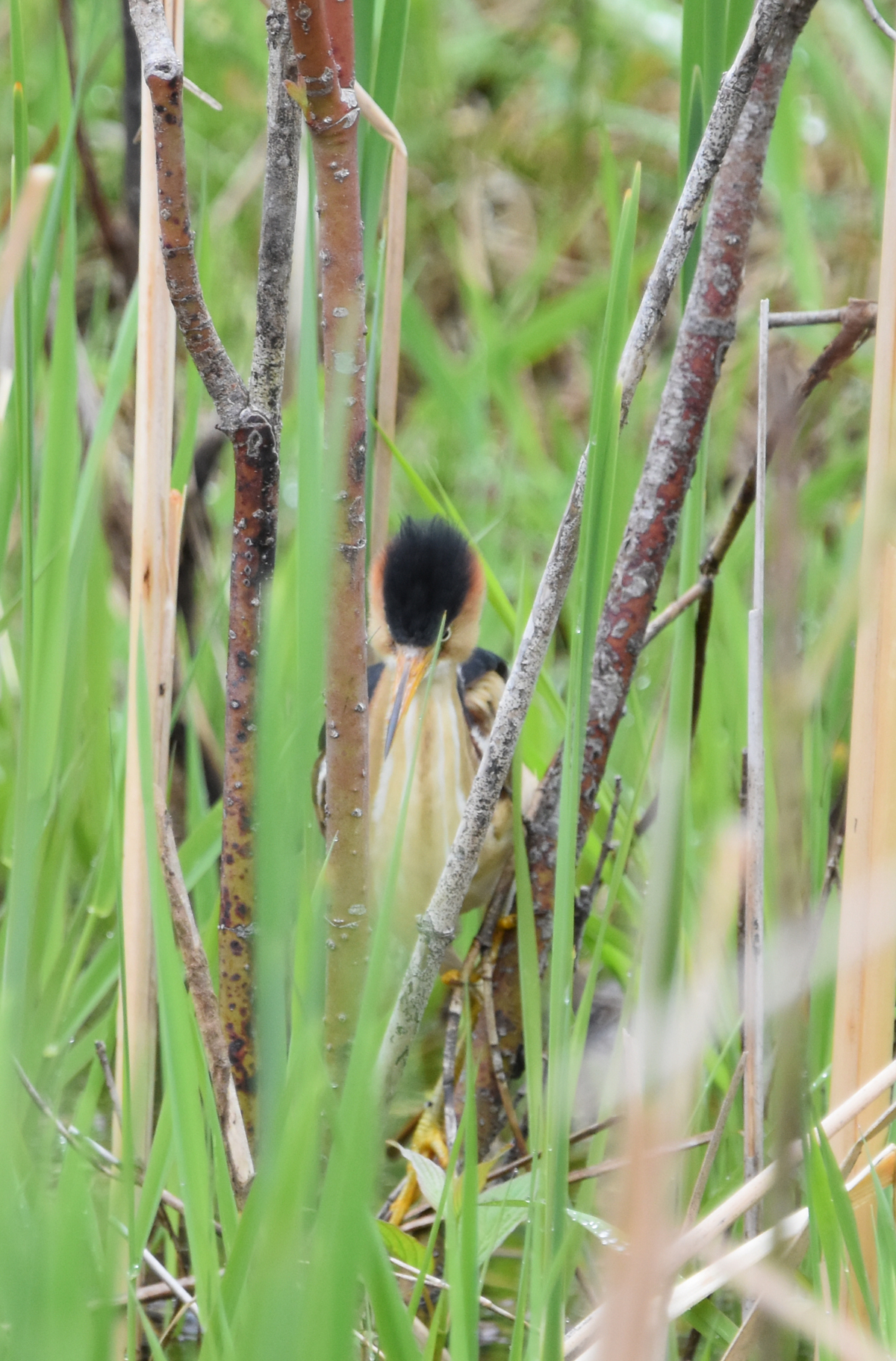 That’s much easier to see…isn’t it?
That’s much easier to see…isn’t it?
A turtle-monitoring team member came and went depositing turtle traps on the shore. It didn’t move.
Three sets of bird watchers arrived and enjoyed looking at the bird. It didn’t move.
This is how he stayed for several minutes.
Finally, it flew back up the Duck pond towards the inlet.
I thought that was likely the last I’d see of the bird that day, but instead THREE more times, Meghan pointed it out to me. The last time allowed me to get these photos to show the wonderful way this bird can stretch out to reach its prey. Suddenly the need for those strong huge gripping toes became obvious.
I had a great time watching this bird and would like to extend many, many thanks to Meghan!
Watching a Least Bittern Stalking His Prey is Sweetern at Colonel Sam Smith in Toronto
Several times we watched the Bittern move its wings in funny quick motions after standing still for a long time. I’ve read they will deliberately use their wings to create a patch of shadow to encourage small fish to move close but the day we were watching was overcast and he didn’t keep his wings still. I suspect he may have been stretching out the kinks after being immobile for so long.
The hunt begins by waiting in a likely spot.
The prey is in a good spot.
The amazing stretch begins.
Keep stretching: those feet must have an amazing grip.
How Do You Tell a Male Adult Least Bittern from a Female?
This was a male Bittern and the dark green back and top of the head that looks black prove it. Female Least Bitterns are dark brown on the back and crown. The young ones look a bit like the females but the stripes are more vivid.
Imagine the gymnastic strength of those legs keeping him from tipping over into the water!
Success: the fish is mine!
Have Far North Do Least Bitterns Migrate?
I was surprised to see on the Cornell Website that Least Bitterns don’t actually go very far north. In fact, they only seem to go a bit further north, along the edges of the Great Lakes. So the Juveniles seen in the past may actually have started their southern trip from somewhere fairly close by.
Maybe we’ll both be back at the park at the same time sometime. I hope so!
Related Reading
Join In
Have you seen a Least Bittern (or Sweetern as someone in my family says)? Has a photographer ever helped you find a much-sought-after bird? Please share your experience with a comment.


